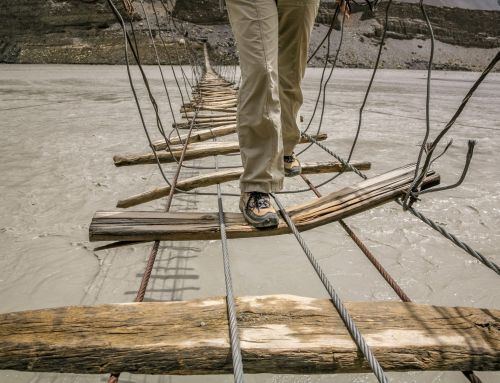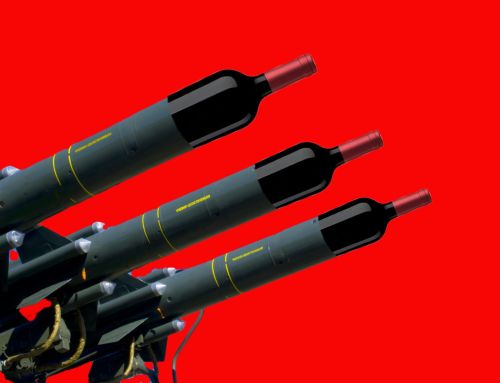In 1971, David Adelsheim and his wife Ginny purchased a piece of property near Newberg, Oregon with the aim of planting a vineyard. As that site produced commercial fruit in 1978, Adelsheim Vineyard became the first winery in Chehalem Mountains, today recognized as a sub-appellation of Willamette Valley. The Adelsheims were one of only 10 families in the area to make wine from grapes planted at their own properties prior to 1980.
Over the ensuing 50+ years since purchasing that site, David Adelsheim has been integrally involved in almost every aspect of the evolution of Willamette Valley. This spans from close to the valley’s earliest days as a wine region to one that today has received world-wide recognition.
In 2012, Adelsheim received a Lifetime Achievement Award from the Oregon Wine Board. While he sold his shares of Adelsheim Vineyard in 2017, he continues to play a significant role at the winery and the industry more broadly.
Here, I talk with Adelsheim about the early days of Willamette Valley and its evolution into the early 2000s, when the area started to receive increasing attention for its wines. In Part II, we discuss the sub-dividing of Willamette Valley, Chardonnay’s continued rise to prominence, and what challenges lie ahead. The interview has been edited for length and clarity.
What were some of the challenges early on in Willamette Valley, trying to create not only a consistent product but also just trying to get a business off the ground?
If we’re talking about the late ‘70s and the ‘80s, literally everything was a challenge. As a teeny industry, we had no idea what we should be doing to create this vision of what we wanted, which was an important wine region that made Pinot Noir and Chardonnay and Riesling and whatever.
We didn’t understand grape growing. We had references to California, increasingly to Burgundy, but we had no references to Oregon of course. We had winemaking challenges because, again, we have references to California, which in itself was in flux. Pinot Noir from California particularly was not something you wanted to emulate in the ‘70s.
It’s one of the reasons I went to Burgundy in the ‘70s, to figure out ‘Okay, well, if it’s all about the winemaking, what’s the winemaking?’ Of course it wasn’t about the winemaking. They weren’t doing anything unusual.
All that just gets you to having something in the bottle. Then the real challenges begin. How do you sell wine in the short-term? How do you build a brand for your winery and, equally important, for your region? How do you make enough money so you’re not out of business the next year? So there are these five or six different broad categories. Most of us had no idea about any of them. We literally knew nothing about any of those topics.
So literally everything was a challenge. In some ways, I’m surprised that the region is now a luxury wine region with a tremendous reputation and even modest financial success for many wineries.
What was it like when your first wines came out, and you were going around trying to show and sell those wines? What was the reception, both to the wines themselves and trying to tell the Oregon story?
The first two wines we had to sell were actually from Sagemoor Farms in Washington, a Semillon and a Merlot. Then starting in ’82, we finally had our estate wines, which we made starting in the ‘78 vintage and ’79 but hadn’t really gotten around to selling.
Ginny would fill up the car with Semillon and Merlot and drive to Corvallis and Eugene, calling on a few wholesalers and maybe one restaurant. If they would buy six bottles, then she’d pack that up, hand it off, get a check, and we could eat dinner that night. I did the same in Portland. It was really the most personal but also the most naïve way of selling.
It was hard-going because Oregon didn’t make wine as far as anybody knew. We were not only selling a bottle or half a case or a case of wine, we were selling a region that people had really no expectations of. In fact, negative expectations were out there.
As you move into the ‘80s to early ‘90s, you start to have some interest and awareness from Burgundy producers in Oregon. How did that change the dynamic of the valley or influence what was happening?
In the industry between the ‘70s and ‘87 when we helped the Drouhins buy their first piece of property, there was a tremendous collaborative focus on building a wine industry. Everybody was trying to build this brand which was increasingly based on Pinot, because before 2005, Pinot Noir was not an important grape variety in the United States.
Obviously the movie Sideways changed that, but prior to the movie, Pinot Noir was working beneath the surface. And we were having to talk about Oregon. Once I wrote the AVA petition and it was approved in 1983, then we had to talk about Willamette Valley.
So all of these things were having to be promoted up until ‘86 when Drouhin toured the valley. Drouhin was so ahead of his time. Nobody even thought about Oregon from France for almost 20 years, even after Drouhin bought. It was 20 years with Drouhin the only French winery having invested in Oregon.
There was a tremendous amount of communal brand building that allowed Robert to think that it was worth investing in Oregon and in building viability and credibility for the Pinot Noirs we were making.
You mentioned the movie Sideways. To what extent did you feel an impact when that movie came out?
Everybody sold out immediately. Everybody sold all their wines.
People have asked me numerous times, ‘What was the big moment that happened that changed everything and you knew you were going to make it?’ There wasn’t one. It was a series of things happening. The movie was kind of a late-comer in a sense. But it was important.
Prior to the movie, I went to some restaurant in LA, famous old restaurant, and was told ‘We’re not very interested in Pinot. Our customers really like Chardonnay and Cabernet.’ After the movie, I went to a different restaurant that happened to be in New York. I tried to show them Pinot Gris, and they said ‘Our customers are not all that interested in Pinot Gris. They really like Cabernet, Chardonnay, and Pinot Noir.’
That really is what the movie did. It not only made people aware of Pinot but placed Pinot at the top of the heap. The amazing thing is, that movie was all about Santa Barbara, but 800 miles north we sold our wines out in a month.
After Sideways, as there started to be more awareness of Willamette Valley, how did that change what you did in the market in terms of how you told the story of what you were trying to do?
Prior to around 2000 – and there is no exact date – the wine industry had to convince the public that we were making great wine. We couldn’t talk about anything else. It was basically ‘Pinot Noir, Willamette Valley. This is delicious wine.’ ‘Here’s where we are on a map, it’s not too dissimilar from Burgundy, try the wines.’ Those were really the selling points prior to roughly 2000.
What happened then?
Around 2000, things began to change. We were not having trouble selling the wines, even before the movie. Obviously the movie sped it up even more. But people around the country knew where Willamette Valley was, knew that we made Pinot, and were receiving it positively.
After 2000, there was more focus by the wineries on place. What does it mean to be in the Willamette Valley? As we created these nested AVAs, what does it mean to be, in our case, in the Chehalem Mountains? Or Dundee Hills or Yamhill-Carlton or Eola-Amity? What does that mean?
We’re still in the midst of that conversation, but we’re no longer having to tell people we make great wine. It’s sort of self-evident by the fact that we’ve got everybody in the universe buying land here now, because they want to be part of what I’ve come to realize is one of the few luxury wine regions in the New World. And we created that without trying to.
We were trying to make great wine, and what we created was a great wine region where people in their first vintage can make wine and sell it at $75 a bottle and nobody will bat an eye, assuming that the wine tastes like a $75 Pinot. We didn’t set out to do that.








Leave A Comment